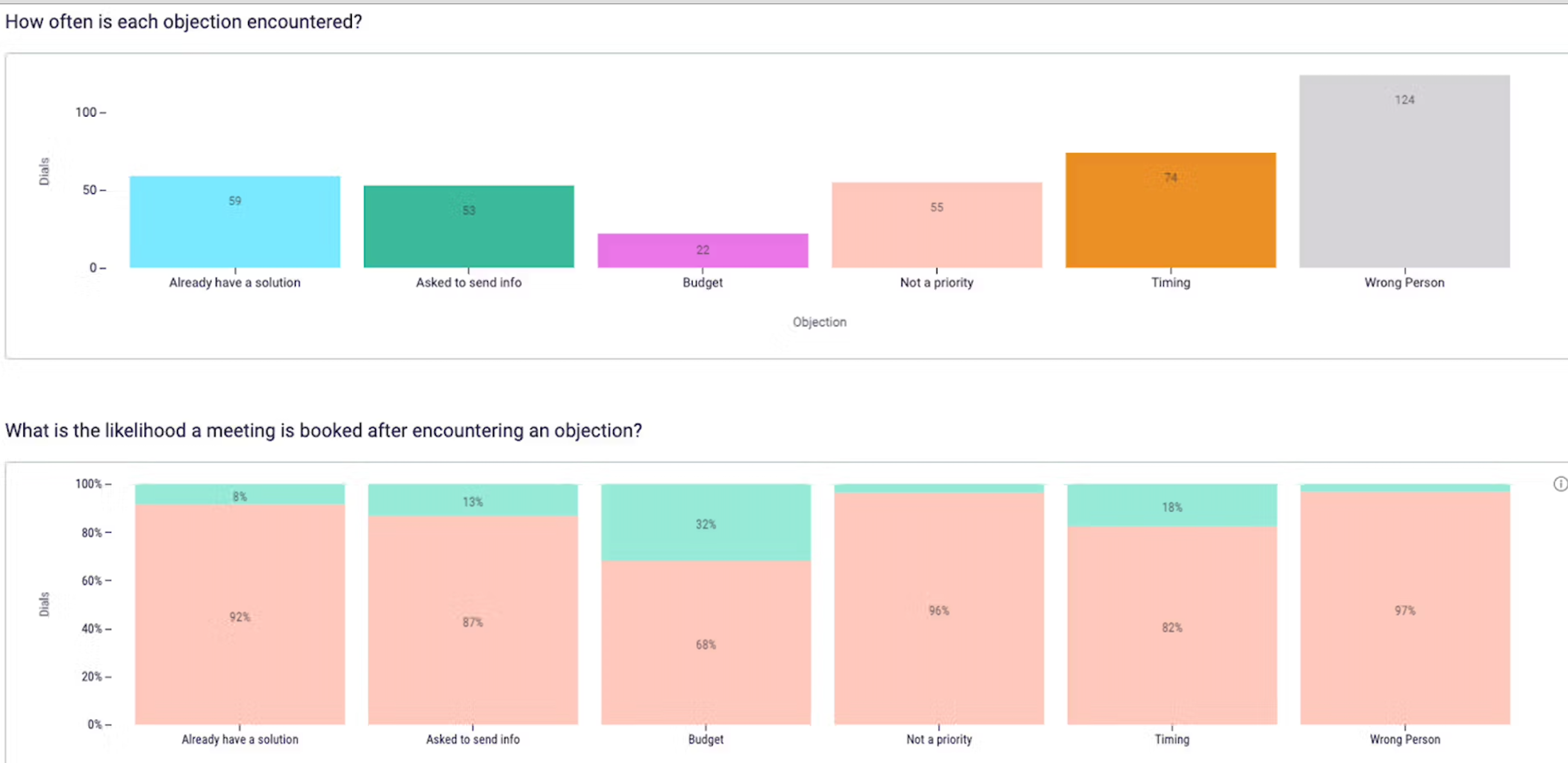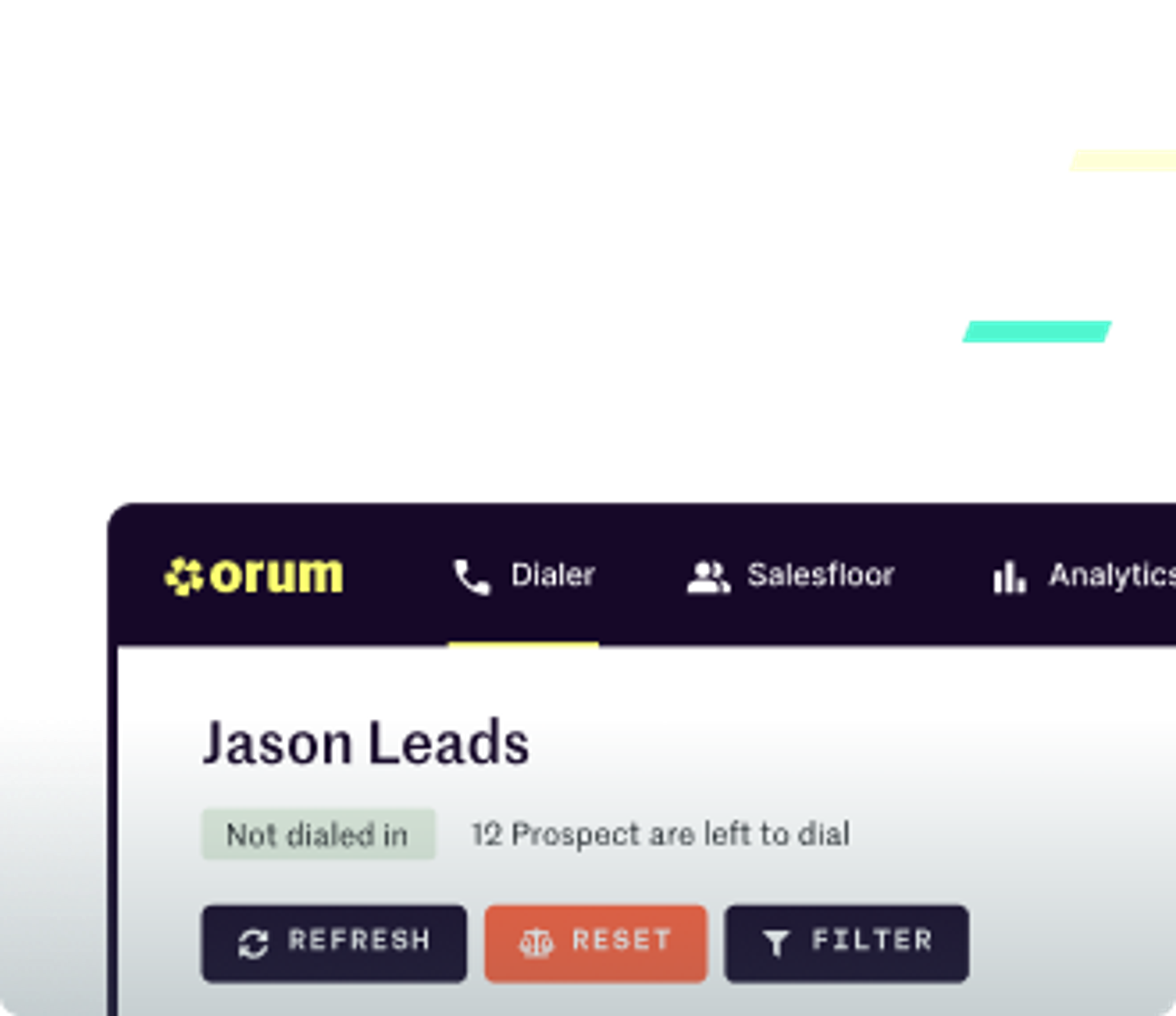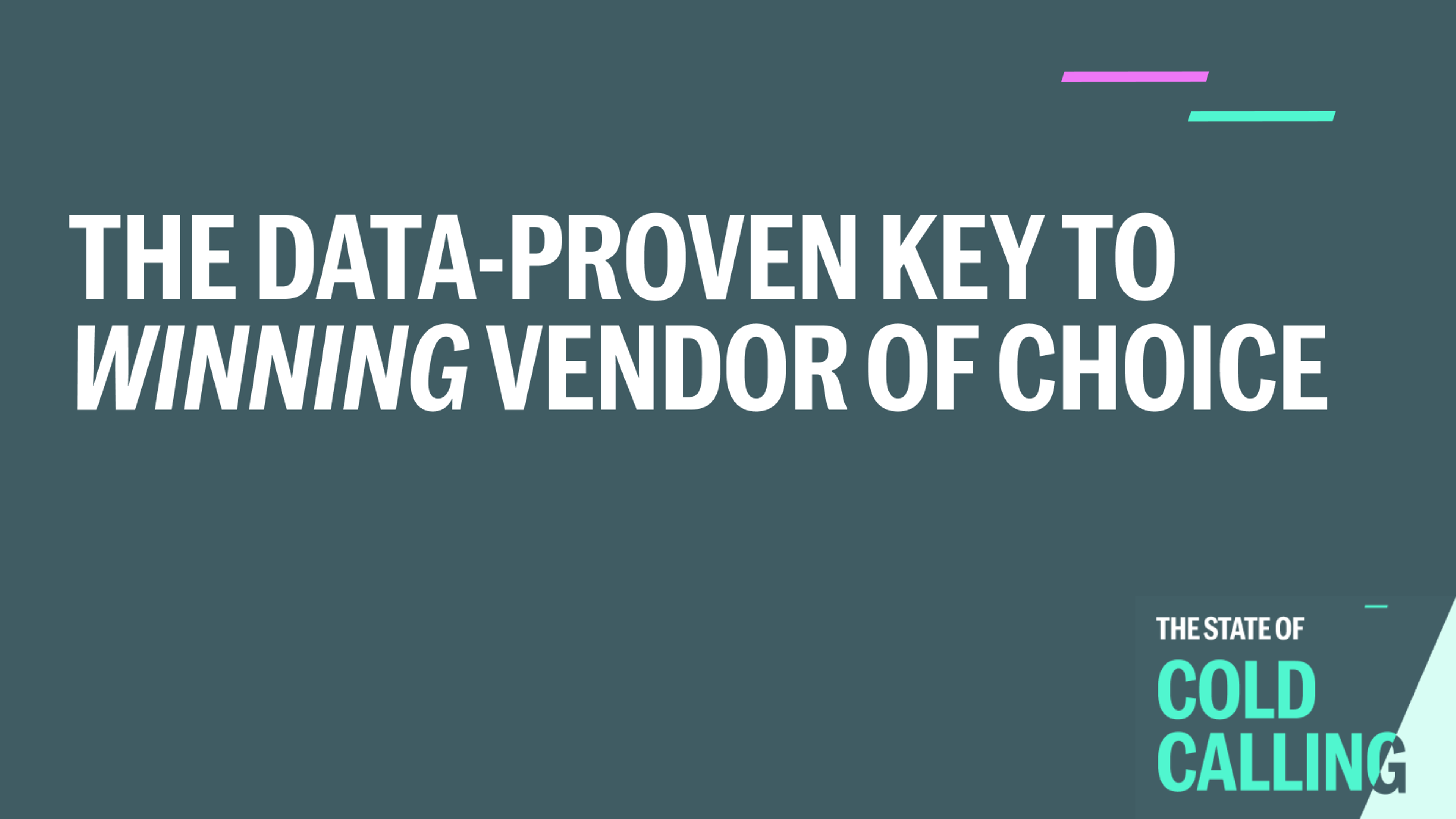How Long Is a Successful Cold Call, Really?


Spoiler: It’s not about how long you talk. It’s about how well you listen.
Cold calling was never dead, but it’s certainly been reborn in an age of strategic, AI-driven Live Conversation Platforms. Using tools like Orum, your reps can get into more conversations with the right prospects in less time than ever before. We create the conversations. It’s up to your reps to create more conversions.
What does that mean in practical terms?
According to Orum platform data, the average cold call lasts just 52 seconds. But the average cold call that results in a booked meeting? Closer to 6 minutes.
Success and rejection are only a few minutes apart.
That difference—those extra five minutes aren’t filled with reps rattling off product features or powering through a memorized pitch. They’re filled with silence from the rep.
Or rather, they’re filled with active listening.
The Real Differentiator in Cold Calling: Active Listening
It’s always tempting to focus on the “what”: What should reps say in their opener? What talk track should they use? What impact will tonality and confidence have on the pitch?
But great cold calls—the ones that convert—aren’t won by the best pitch. They’re won by the best listeners.
Active listening is the unsung hero of sales development. It’s the skill that creates space for prospects to talk. It signals empathy. It builds trust.
And it’s what separates a 52-second hang-up from a 6-minute opportunity.
“Reps build relationships and rapport through phone calls. They establish brand integrity through content. And you establish trust through data that proves the value proposition of your product.” — Orum Sequence Best Practices Guide
Why Active Listening Matters More Than Ever
Today’s B2B buyers are more skeptical, more researched, and more overwhelmed than ever before. According to Orum’s 2024 State of Sales Development report:
- 85% of sales leaders say the phone is their most effective pipeline generator
- Yet the sales cycle is getting longer, and customer acquisition costs keep rising
- Most buyers won’t respond until touchpoint #12
So when you finally connect, you better earn the right to keep talking. You need to earn every single second of the conversation.
Reps who jump into pitch mode too quickly miss the moment. They miss the context. They miss the signal.
Active listening enables your reps to slow down and truly understand what’s behind a prospect’s words. It enables true discovery. And it increases the odds that when they do pitch, it’s relevant and welcomed, not disruptive.
What Is Active Listening in Sales?
Active listening in sales is the practice of fully concentrating, understanding, responding to, and then remembering what a prospect says. It goes beyond hearing—it’s about making your prospect feel heard.
Key Techniques for Sales Reps:
- Silence as a strategy: Let prospects talk. Don’t rush to fill every pause.
- Reflection: Repeat back key phrases to confirm understanding (“What I’m hearing is…”).
- Follow-up questions: Go deeper with open-ended questions (“Tell me more about that challenge…”). Getting them talking is a start. Keeping them talking is crucial.
- No scripts, just signals: Talk tracks are pivotal for creating milestones and inflection points in conversations. But trying to force a conversation to stay on your talk track will end up in a runaway lead. (This is a train reference!)
Practicing relentlessly with your script ensures you have the ability to put it aside during your conversation and listen intently for the signals your prospect is giving you. Memorizing the key components of your talk track means you can listen to the actual needs and concerns of the prospect and answer their questions organically with your talking points without sounding robotic.
Sales teams that practice active listening build more trust, and in sales, trust is currency.
The Numbers Don’t Lie: Conversations > Dials
Some of the best evidence for the value of longer, more meaningful conversations comes from real customer results.
Take IntelAgree, a growing sales team with a lean SDR org. After implementing Orum’s AI-powered power dialer and coaching their reps to focus on conversation quality, not just volume, they saw game-changing improvements:
- 207% increase in sales pipeline
- 83% jump in meetings booked
- 112% more Sales Accepted Leads (SALs)
“We went from every rep making dials to every rep having conversations,” said Brett Ghione, Director of Sales Development at IntelAgree. “It wasn’t about doing more—it was about doing it smarter.” — IntelAgree Orum Customer Story
These results didn’t come from better talk tracks or adding headcount. They came from empowering reps to be present, listen actively, and move beyond scripted pitches. The moment reps stopped trying to force meetings and started focusing on listening? Their numbers soared.
As more leaders shift their KPIs toward meetings booked and away from activity numbers, active listening will only become more essential.
“The worst thing that can happen during a cold call is they get rejected… keep the opportunity mindset at the forefront of every call and understand that a failure is only a failure if your reps don’t keep going.” — Orum Calling Culture Guide
Cold Call Objection Handling Starts With Understanding
You can’t talk your way past every objection. But you can listen your way into a meaningful dialogue.
According to Orum’s objection-handling framework, reps hear nine core objections repeatedly—from “I don’t have time” to “Just send me an email.”
Here’s the truth: Most objections aren’t rejections. They’re reflexes. They're buying signals wrapped in resistance.
The best reps don’t bulldoze through them. They slow down and respond with curiosity.
Three ways to handle objections more effectively:
- Acknowledge + Ask
- Prospect: “I’m too busy right now.”
- Rep: “Totally understand. Just so I don’t waste your time—can I ask what’s highest on your plate right now?”
- Align, then educate
- Prospect: “We already use something similar.”
- Rep: “Makes sense. Many of our customers said the same—until they saw how we help reps cut 4-5 hours of manual work per week.”
- Peel the onion
- Treat the first objection as the beginning, not the end, of the conversation.
- Reframe: “Is it the timing that’s off, or the topic itself?”
When paired with active listening, objection handling becomes a bridge, not a blockade, to longer, more productive cold calls.
“Objections are not walls. They’re doors. And if you listen closely, your prospect is often handing you the key.” — Orum Blog: Mastering Objection Handling【source】
Read the full Orum guide on objection handling →
Also, be sure to check out your Orum Analytics to understand your teams success rates connected to each objection

Tips for SDR Managers and Sales Ops
If you want your reps to move from 52 seconds to 6-minute conversations, try this:
1. Coach to Listen, Not Pitch
Use call reviews to highlight moments where the rep paused, asked a question, or echoed a prospect’s pain point. Reward listening in your coaching model.
2. Track Call Length & Conversion Rate
Use a tool like Orum to surface patterns: Which reps are consistently getting past two minutes? Which calls are leading to meetings? Time matters—but not in the way we used to think.
3. Redefine "Success"
Not every successful call ends in a demo. Reframe success as learning something useful—new information, a referral, or even a “not now” that informs a better future approach.
Talk Less. Hear More.
(Are Hamilton references dated now?)
Reps who dominate the conversation rarely win it. The goal of a cold call isn’t to impress. It’s to understand.
So the next time your team hits the phones, remind them:
Success isn’t measured in monologue—it’s measured in dialogue.
And if they’re wondering how to turn 52 seconds into 6 minutes?
Talk less.





